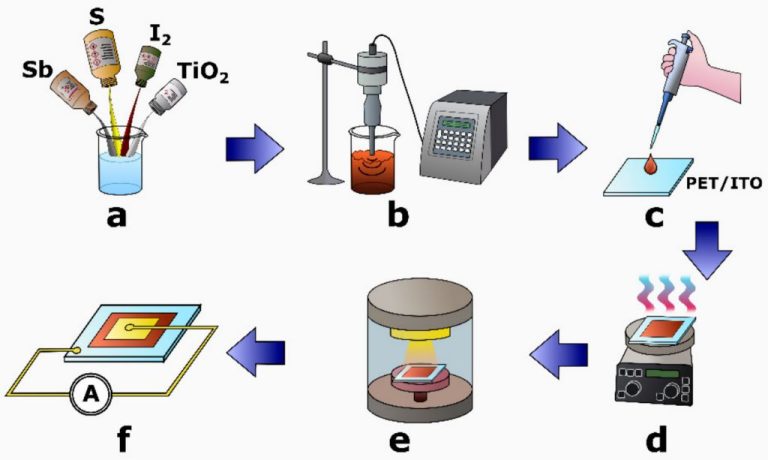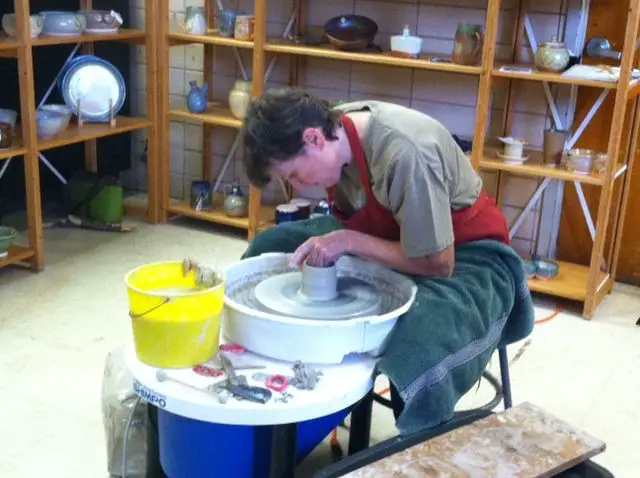What Makes Soil Turn To Clay?
What is Clay Soil?
Clay soil is a fine-grained earthy material that contains a high percentage of clay particles. Clay particles are defined as being less than 0.002 millimeters in diameter, with most clay particles falling in the range of 0.0002 to 0.001 mm. This incredibly small particle size gives clay soil a smooth, sticky texture when wet. Clay soils have high cation exchange capacity due to the small size and plate-like shape of clay particles, allowing them to adsorb and retain nutrients. Clay soils are prevalent in areas with substantial rainfall, which causes leaching of larger particles while the smallest clay particles remain behind. Major clay soil regions include the southeastern United States, western Europe, India, northeastern China, and along many tropical and subtropical rivers.
Clay Soil Composition
The primary components that make up clay soil are silica, alumina, and water. Silica and alumina are the main mineral particles in clay. Silica is silicon dioxide, while alumina is aluminum oxide. The chemical structure and small size of these minerals is what gives clay its unique properties.
There are several common clay minerals that are composed of silica and alumina. Three of the most abundant clay minerals are:
- Montmorillonite – Made up of sheets of silica tetrahedrons bonded to alumina octahedrons. Has high cation exchange capacity.
- Illite – Similar structure to montmorillonite but has potassium ions between its layers which reduce swelling.
- Kaolinite – Silica tetrahedrons bonded to alumina octahedrons in stacked sheets. Low cation exchange capacity.
The small size and sheet-like structure of these clay minerals, along with their water content, give clay soils their unique properties like plasticity, shrinkage and swelling behavior.
How Clay Forms
Clay soils form through the weathering, transportation, deposition, and accumulation of very small mineral particles. This process typically begins when rocks like granite, basalt, or shale are exposed to weathering factors over long periods of time.
The weathering process breaks down the minerals in these rocks through physical processes like freezing/thawing cycles as well as chemical processes. For example, some minerals can be dissolved by acidic rainwater. The weathering gradually liberates tiny mineral particles from the rocks over time.
Once liberated, these tiny particles are transported away from their parent rock by water, wind, and gravity. Flowing water is the primary means of transportation, carrying clay particles in rivers, streams, and groundwater flows. The tiny size and electrostatic charge of clay particles keeps them suspended in water rather than immediately settling out.
Eventually, these suspended clay particles are deposited, usually in still or slow-moving water conditions like lakes, wetlands, and floodplains. Here, the clay accumulates over time as more particles are deposited from upstream sources. The accumulation and concentration of clay particles in these depositional environments is what leads to the formation of clay soils.
Factors that Influence Clay Formation
There are several key factors that influence the formation of clay soils from other soil types:
Parent Rock Material
The parent material that the soil forms from impacts clay content. Clay soils often originate from weathered rocks like shale that have high clay mineral composition. As these rocks break down over time through weathering and erosion, the clay mineral fragments are released and accumulate in the soil.
Climate and Weather Patterns
Areas with heavy rainfall tend to have more clay soils because water helps transport clay particles from top layers down through the soil profile. Drier climates have less clay because there is less moisture to move clay particles downward. Seasonal wet and dry cycles also promote clay formation through the shrink-swell process.
Topography and Drainage
Low, flat areas allow clay to accumulate since water can’t drain away quickly. The poor drainage keeps moisture levels high, enabling clay transportation and deposition. Steeper slopes and well-drained areas limit clay accumulation.
Biological Activity
Living organisms like plant roots, bacteria, fungi, and earthworms help break down parent material and mix soil layers. Their secretions and burrowing actions assist in releasing clay particles for downstream translocation within the soil.
The Weathering Process
The weathering process is crucial for creating the conditions that allow clay particles to form. Weathering is the breakdown and alteration of rocks and minerals on the Earth’s surface. There are two main types of weathering that contribute to clay formation:
Mechanical weathering physically breaks down rocks into smaller pieces without changing their chemical composition. Processes like ice wedging, root wedging, and temperature fluctuations literally fracture rock material into smaller fragments. This mechanical breakdown produces smaller mineral particles that can then undergo chemical weathering.
Chemical weathering alters the chemical composition of minerals. Water is the primary driver of chemical weathering. It can dissolve soluble minerals and alter the chemistry of other minerals by facilitating oxidation, carbonation, and hydrolysis chemical reactions. These chemical changes produce altered mineral products that make up clay particles.
Together, mechanical and chemical weathering work in tandem to transform rocks into the tiny mineral fragments and altered chemical compounds that accumulate as clays. The constant exposure to water facilitates both types of weathering processes as well as the transportation of the weathering products.
Clay Particle Transportation
Clay particles are transported from their parent material through the processes of erosion and surface runoff. As rain falls on the surface, it detaches clay particles and suspends them in the flowing water. This runoff transports the particles downhill into streams, rivers, and lakes.
Once suspended in water, the clay particles remain in suspension due to their tiny size and low settling velocity. This allows them to be transported long distances by rivers and ocean currents before eventually settling out. The smaller the particle size, the slower they will settle out of suspension. Clay particles can travel extremely long distances before coming to rest and accumulating as deposits.
When river currents slow down at river bends, clay particles will begin to settle out due to the reduced turbulence. Lakes and oceans also provide environments where clay can slowly settle over time. The smallest colloidal clay particles may take years to fully settle out in standing water bodies. This settling out and accumulation allows clay deposits to form.
Clay Particle Deposition
When eroded clay particles are transported by water, they will eventually settle out and start accumulating if the water flow becomes still or very slow. This typically occurs in lakes, wetlands, estuaries and other calm water bodies. The smallest clay particles can remain suspended for very long periods until they eventually settle out. Over extended periods of time, these settled clay deposits build up into layered beds or strata.
The very slow settling rate of clay particles is key to this deposition process. Clay is the smallest soil particle, often less than 0.002 mm in size. With such minimal mass, clay particles settle extremely slowly compared to larger silt and sand particles. This allows clay to be carried long distances before deposition occurs. In slow moving or still waters, clay will gradually settle over months and years, accumulating into thick layers.
These layered clay deposits create unique strata patterns, with coarser particles like silt and sand deposited first, followed by finer clay layers on top. Over time, the clay beds accumulate and compress into dense, cohesive blocks of clay soil. Rivers, lakes, wetlands and other water bodies provide ideal conditions for this slow settling and layering pattern, creating clay-rich soil profiles.
Flocculation of Clay Particles
An important step in the formation of clay soils from smaller particles is a process called flocculation. Flocculation describes the binding together of clay particles into larger clumps or aggregates.
This occurs because clay particles carry an electrostatic charge that attracts water molecules to their surface. When enough water molecules bind to the clay surfaces, it allows the particles to stick together into clumps through bridging. This process is known as flocculation.
Flocculation is important because it allows the very small clay particles to bind together into larger aggregates that can then settle out of suspension. Without flocculation, the tiny individual clay particles would remain dispersed in water and not accumulate to form clay deposits.
The clumps formed through flocculation create a open, aggregated structure in clay soils. This gives clay soils their characteristic soft and malleable consistency when wet.
Management of Clay Soils
There are several strategies that can help improve the drainage and fertility of clay soils:
Improving drainage – Installing drainage tile or drainage ditches can help excess water to drain away more quickly after rain events or irrigation. This prevents extended periods of standing water that can damage crops.
Adding organic matter – Increasing the organic matter content through additions of compost, manure, cover crops or crop residues can help stabilize soil aggregates. This improves both drainage and fertility.
Using cover crops – Planting grasses, legumes or brassicas as cover crops will help maintain living roots in the soil year-round. Their root systems create channels for improved infiltration and drainage.
Reducing compaction – Compacted clay soils further restrict water drainage and root growth. Subsoiling, controlled traffic patterns or avoiding working wet soils can help reduce compaction issues.
Key Takeaways
Clay soils form through the chemical and physical weathering of rocks over long periods of time. The weathering process breaks down rocks into smaller particles. These clay particles are then transported by water, wind or gravity before being deposited in areas like river deltas, lakes, floodplains or deep ocean basins.
The key factors involved in clay formation are the weathering of parent material, transportation of clay particles to a new location, and then deposition and accumulation of the particles. Once deposited, clay particles undergo flocculation, aligning face-to-face and clustering together due to electrostatic forces. This gives clay its dense, cohesive structure.
Clay soils are characterized by their very small particle size, less than 0.002 mm. The small size and platelet structure give clay unique properties like plasticity, shrinkage and swelling. Clay soils tend to drain slowly and retain moisture and nutrients. Understanding the process of clay formation helps explain the characteristics and challenges of managing clay soils.




